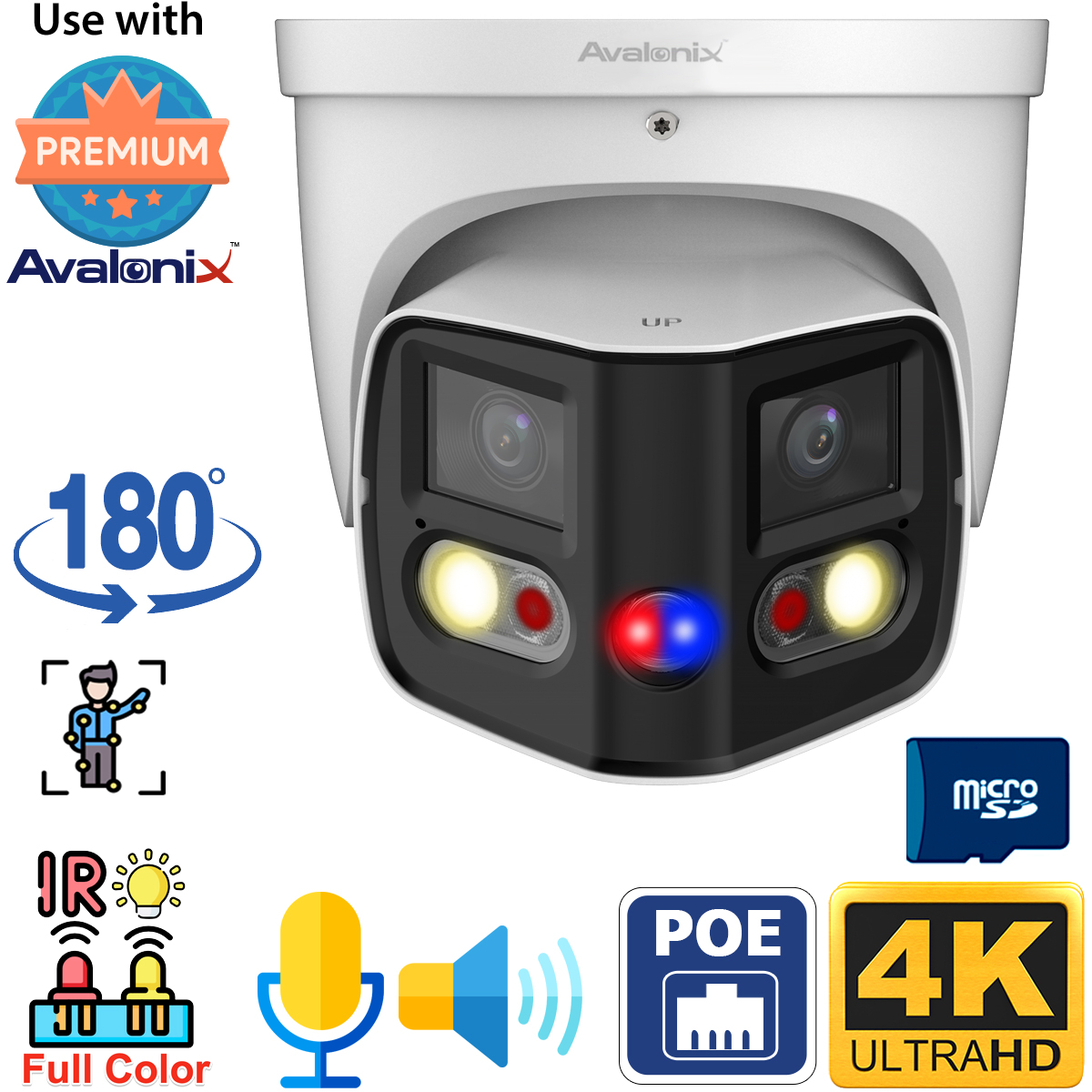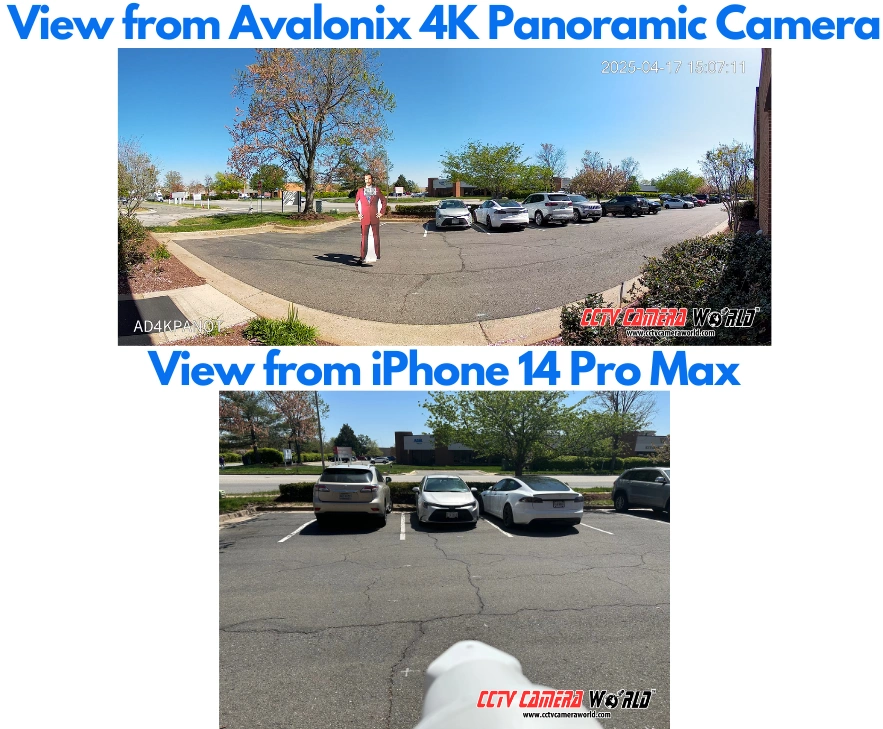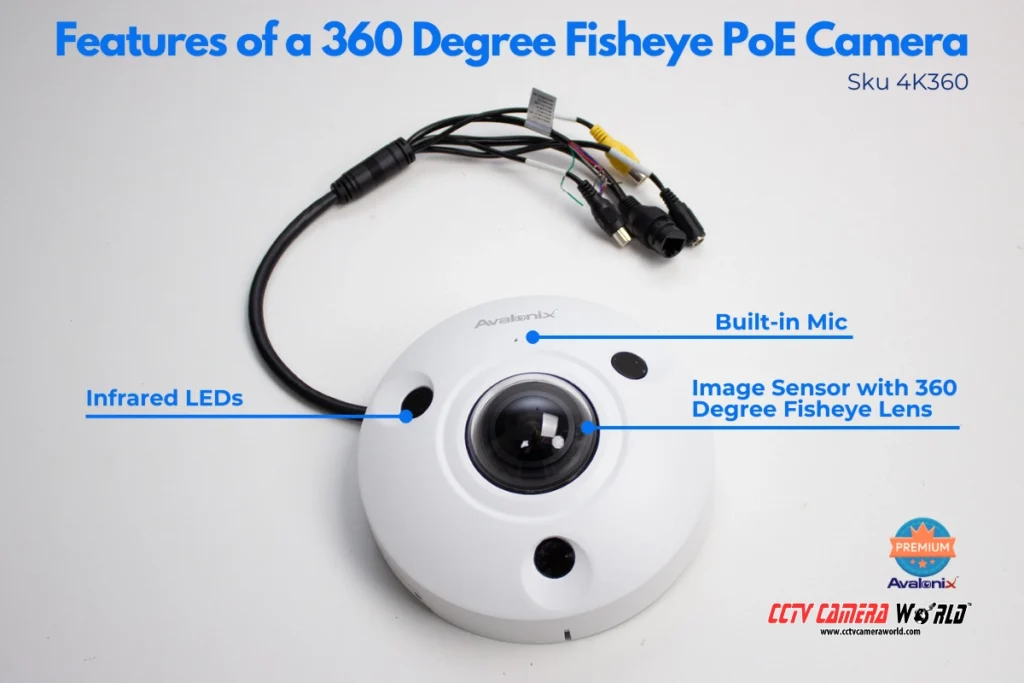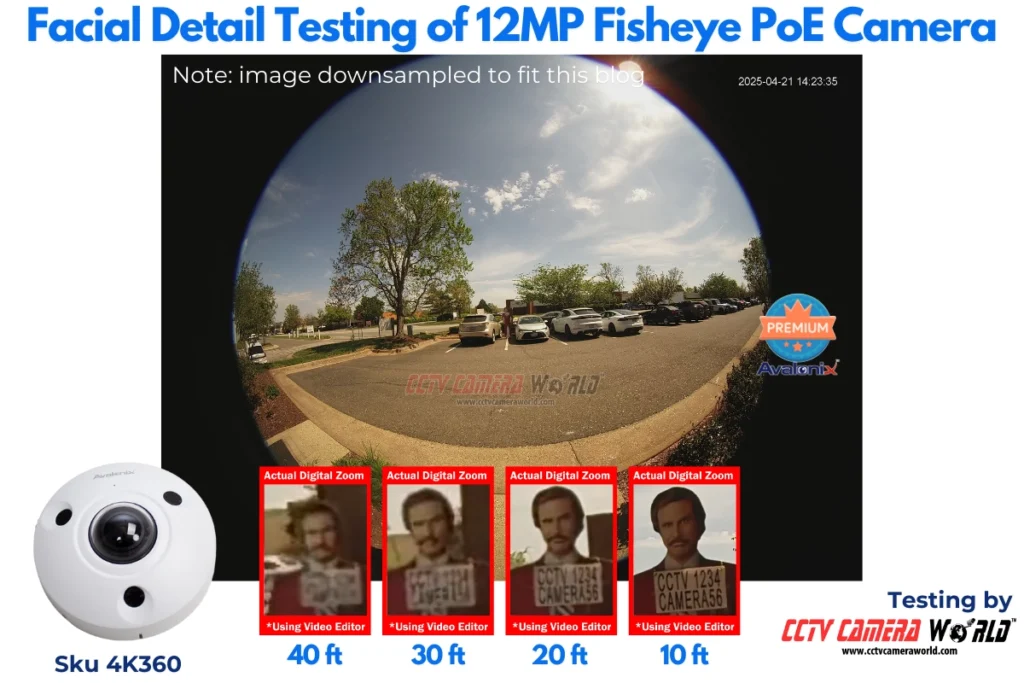8MP 180 Degree View Camera
Weather proof, 4K Resolution, Dual Sensor for Panoramic Stitched View, PoE, Smart Detection, Active Deterrence, Two-way Audio, Wall or Ceiling Mount. Alerts without subscription.
Learn More
Ever wondered if you can use one camera to cover the full width of the yard in front of your house? We get requests like that all the time here at CCTV Camera World. Of course, running two separate wires on each side of your home or business to cover the front from both angles is a hassle and more costly. Plus, you may think it's ugly to have a couple of cameras visible on the front of your home. Well, that's where fisheye and panoramic cameras are useful, so you can get a wide-angle view with just one camera.
With advancements in multi-sensor imaging technology, wide-angle security cameras have become more affordable and widely used than ever. Traditional fisheye cameras relied on a single image sensor paired with an ultra-wide-angle lens, often resulting in noticeable image warping and low clarity. While that technology has improved, panoramic cameras now offer an alternative by combining multiple image sensors into a single, seamless wide-angle view through image stitching.
Both fisheye and panoramic cameras have their unique advantages and limitations, and each excels in different surveillance strategies. In this article, we’ll break down the differences between the two, highlight where each performs best, and help you decide whether a fisheye, panoramic, or even a multi-camera setup is the right choice for your security needs.

Before choosing between a fisheye or panoramic camera, it helps to understand how each type works and what makes them suitable for different video monitoring needs requiring wide viewing angles.


8MP 180 Degree View Camera
Weather proof, 4K Resolution, Dual Sensor for Panoramic Stitched View, PoE, Smart Detection, Active Deterrence, Two-way Audio, Wall or Ceiling Mount. Alerts without subscription.
Learn MorePanoramic security cameras are designed with multiple image sensors, typically two, built into a single larger camera housing. These sensors are aimed 45 degrees in different directions to capture separate video streams that are stitched together into one ultra-wide image. This stitching process creates a seamless panoramic view, often between 150 and 190 degrees, providing more coverage than, say, a traditional fixed-lens 4K PoE camera.
Below is an image comparing the field of view of a panoramic camera with multiple image sensors to that of a picture taken by an iPhone 14 Pro Max in standard wide view which has a 69 degree viewing angle.

Panoramic models are available in turret or bullet-style housings and are ideal for covering wide areas with fewer cams needed. Most panoramic cameras come equipped with white light LEDs for color night vision along with a starlight image sensor so you can see clearly in color at night.

Active deterrence models, such as our 4KADPANOT Panoramic 4K PoE Camera with smart deterrence, include additional illumination options such as IR night vision and red/blue strobing lights. In addition to its wide 180-degree view, the camera intelligently manages its lighting based on the environment. At night, it uses infrared for discreet black-and-white surveillance, switching to its white LEDs when motion is detected nearby. If you have an intelligent function such as smart motion detection configured, the camera activates its red and blue lights and speaker to deter the trespasser.
Fisheye security cameras use a single large image sensor paired with an ultra-wide-angle lens that captures either a 180-degree or 360-degree view. The term "fisheye" is a reference to the wide field of vision that fish have, thanks to the placement of their eyes. This is a fitting comparison, as fisheye cameras are designed to give maximum situational awareness from a single vantage point.

12MP 360 Degree Dome Camera
Weather proof, 12MP, 4K, De-warp, PoE, Smart Detection, Wall or Ceiling Mount. Alerts without subscription.
Learn More
The raw video captured by a fisheye camera appears in a circular format, which is not useful by itself. Specialized software, typically accessed through a computer, web browser, or a compatible NVR, performs a process called dewarping. Dewarping converts the distorted image into flat, usable video that makes sense for surveillance.

While some fisheye models do not include infrared, many offer limited night vision, typically for recording black and white footage up to 30 or 40 feet. If you are looking for a high-performance fisheye camera with night vision, our 4K Fisheye 360 Camera offers crystal-clear video, advanced dewarping features, and a wide field of view that is perfect for monitoring large indoor or outdoor spaces.

Now that you know the basics of each camera type, let's explore some key technical differences between panoramic and fisheye cameras.
| Camera Type | Field of View | Image Distortion | Image Resolution | Best For | Facial Detail Distance |
|---|---|---|---|---|---|
| Panoramic Cameras | Typically 180 degrees | Mild warping near image center | Up to 4K 8MP | Up to 50 feet | No additional software required |
| Fisheye Cameras | 180 or 360 degrees | High distortion (circular image) | Up to 4K 12MP | Up to 35 feet | Requires dewarping via software, web browser, or compatible NVR |
Super wide-angle cameras offer unique advantages, but each type has trade-offs. Comparing their pros and cons can help you decide which camera fits your surveillance needs best.

Panoramic cameras are powerful tools for wide-area coverage, but they aren’t always a one-size-fits-all solution for every situation. Here’s what to keep in mind:
Fisheye cameras are excellent for specialized use, especially indoors. However, they come with limitations. We created the below image from video recorded during our testing of the 4K360 12MP Avalonix Premium Fisheye Camera and found that facial detail is acceptable at 30ft, and best at 20ft.

Choosing between a panoramic or fisheye camera depends heavily on where and how you plan to use it. Below are some of the most common surveillance scenarios where each camera type excels, helping you decide which is the right fit for your security strategy.